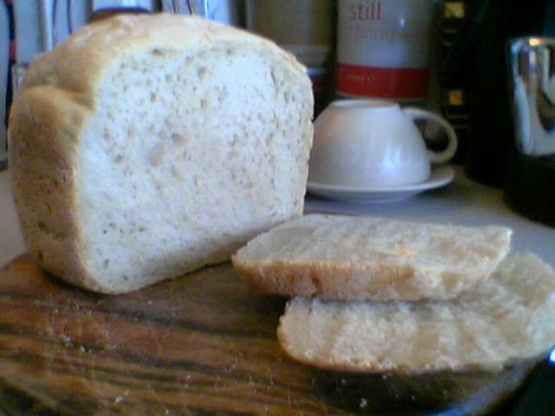Ingredients
-
210 ml water (At room temperature. Bottled spring water preferred but room-temperature tap water ok too)
-
1/4 teaspoon vitamin C powder (a.k.a. Ascorbic Acid powder, optional but strongly recommended)
-
1/2 tablespoon vegetable oil (about 3g) or 9 g butter
-
1 teaspoon salt (About 4g or 5g of Standard Table Salt. Preferably Lo-Salt or other Reduced-Sodium equivalent)
-
300 g strong white flour
-
2/3 teaspoon bread machine yeast (About 3g, standard bread machine yeast, if using sachets, not quite a full sachet)
Instructions
- Remove pan from Bread machine and place on a electronic kitchen scale, and zero scale.
- Weigh 210ml (210ml water weighs 210g) and rest of ingredients carefully into the pan, in the order listed (if you have the time, do have a read through of the notes :).
- Select French Loaf cycle (or Wholewheat/Wholemeal cycle if no French Loaf cycle available) and select crust/firmness if necessary required for your machine. (I feel that this loaf benefits from a fairly firm crust - as long as it's not burnt!).
- Start Machine.
- Notes:
- Time listed is for the actual baking part of my machine's French Bread cycle. They vary by manufacturer.
- I took this recipe originally from a machine which had a 6-hour French loaf cycle but my machine makes a French loaf in 4 hours. My mum's does it in 2 3/4 hours. I've found that the results are pretty consistent regardless of machine, although you occasionally need to increase/decrease amount of yeast to marry the recipe to the 'rise' component of your machine's cycle.
- My machine has an un-overrideable 20 minute pre-heat before it does anything whatsoever whenever I use this cycle, so I need to take the following precautions so that the yeast doesn't make contact with any liquid before kneading starts which I recommend to you:
- When pouring the water do try to pour gently trying to avoid slashing up sides.
- When adding the flour, do try to cover the water completely if possible.
- When adding the yeast, if necessary/inclined try making a dip (or 'well') in the top of the flour and carefully pouring the yeast into the dip/well.
- If using yeast in sachet form it's worth measuring it onto a teaspoon first and holding some of the sachet (depending on sachet size).
- Here in Europe most of our cooking is weight-based rather than volume based.
- A set of electronic kitchen scales with 1 gram graduations can be quite cheap if you hunt around and more than any other cooking and baking they really come into their own when it comes to bread-making, although I usually still use spoon measures for salt and yeast, and for liquid oil when I use it. Gives bomb-proof results, every single time!
